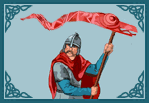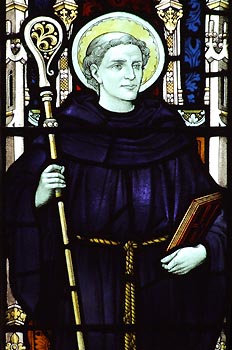 |
 |
|||
|
|
St. Meugan is a very confusing character as he does not have a surviving 'life' and details must be gleaned from other sources. He was apparently a disciple of St. Brioc and the son of a certain Cyndaf (although the hsitorian of ill-repute, Iolo Morganwg, makes him a son of Gwyndaf Hen ap Emyr Llydaw of Brittany). He was the head of a famous monastery, but its location is uncertain. It was probably at Llanfeugan in Llanfair Nantgwyn (Dyfed), although another possibility is the now lost Capel Meugan in Bridell (Dyfed). The former was still a popular place of pilgrimage as late as 1592, when its destruction was ordered. He probably travelled around Wales, founding churches at Capel Meugan in Cilymaenllwyd (Dyfed), Llanfeugan (Llanfigan) in Brycheiniog, Llanrhudd alias Llanfeugan in Dyffryn Clwyd and the lost Capel Meugan in Beaumaris (Gwynedd). The Northern Welsh churches may be early foundations dating from a time when he was court bard to King Cadwallon of Gwynedd (early 7th century), although he is also said to have predated St. Dewi (late 5th century). Geoffrey of Monmouth makes him either a contemporary of Merlin and King Vortigern (early 5th century) or a Bishop of Caer Fudi (traditionally Silchester, but probably Woodchester) under King Arthur (early 6th century). Meugan
also went abroad, where he was known as Mawgan or Malgan. In Kernow
(Cornwall), he lived at St. Mawgan-in-Pydar and St. Mawgan-in-Meneage
where there are still churches dedicated to him today. He is said to have
been the Bishop of the Isles of Scilly, although this seems unlikely. From
there, he crossed to Britanny, possibly in the company of St. Brioc, where
he is remembered at Saint-Maugan and La Meaugon. Meugan appears to have
died on his chief feast day of 24th September, probably back in Wales,
although there also seem to have been subsidiary feasts, perhaps translations,
on 18th June and 15th November.
Records of St. Meugan date back to the 17th century. He is generally considered apocryphal.
|
|||
| © Nash Ford Publishing 2006. All Rights Reserved. | ||||





 St.
Meugan
St.
Meugan